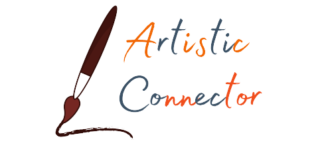We have discussed the many ramifications of the Covid-19 pandemic on the arts. Because Artistic Connector views art education as vitally important, — being the conduit in the dialogue between arts institutions, artists, and communities— I think an article specifically tackling how arts education has been impacted in the last year is appropriate.
We know that museums are suffering due to the Covid pandemic and we know many staff members have been laid off or furloughed. We know that there are museums that may never reopen after closing for the pandemic. In July of 2020, it was projected that “a third of all United States museums may close for good, leading to an additional loss of almost 242,000 jobs. 1 ” But who, in particular, is getting laid off and furloughed? Many argue that it is arts educators over anyone else.

The Museum of Modern Art (MoMA) in New York made the decision two weeks into the pandemic to terminate contracts with their freelance education staff and they believe it may take years before the museum offers freelance educator contracts again. Other museums have followed suit: “an updated report from the AAM … survey, 67% of the museums that responded have had to cut back on education, programming, and other public services due to budget shortfalls associated with the pandemic.2” Additionally, 40% of museum staff that has lost their jobs were educators. The situation has triggered educators to write a letter to MoMA and other institutions explaining the value of museum educators. It has been signed by over 1,200 museum employees and others. Many of the named institutions claim the letter is unfair and exaggerating the situation. However, the director of MoMA, Glenn Lowry, has a $2.2 million salary and in 2019, he made over $4 million. About two miles away from MoMA, the director of the American Museum of National History, Ellen Futter, has said she is taking a 25% salary cut, which brings her salary to about $750,000. In the face of something like that, to cut freelance educators seems just a drop in the bucket.
Educators and education programs are cut because they are easiest to cut. When museums close, the logic is that staff is no longer interacting with visitors in person and there is no more in-person programming so education staff is superfluous. Operations staff is also vulnerable at these times for similar reasons. This reasoning is short-sighted, however. Many museums have provided online programming for people at home during the pandemic. Education staff is imperative for those programs to have meaning and value.
Retaining education staff is also important for the future. As visitors are able to come back to museums, it will be necessary for education staff to provide programming for them. Respondents to a LACMA survey on this topic say “that the prospect of any field trips in the 2020–21 school year—beyond the health concerns involved—would likely be out of the question due to funding issues. 3” Another issue is representation: the “Mellon Foundation Art Museum Staff Demographic Survey in 2018 revealed that 72 percent of staff at institutions affiliated with the Association of Art Museum Directors are white… By contrast, education teams tend to reflect much higher variety along racial, class, and gender lines.4” And it’s not just programming. Educators create experiences outside of programming, as well. Just coming into a museum leads to “developments in critical thinking, tolerance, and empathy in students.5” Educators are able to harness that and provide enriching experiences. They are also the conduit between art and community. The only people in the museum who can make art accessible to everyone are educators. For the last twenty years, art museums have been going in the direction of accessibility and openness and museum educators have been on the front line of that change. Cutting education staff inevitably heads back towards a gatekeeper mentality where art is closed off to everyone except the educated few.
It has been a very difficult time for museums and institutions are trying to make the best decisions for their futures. Hopefully, museum education will return to the top of the priorities list and museums can reinstate the work of connecting people to art.
How has your local art museum handled the pandemic? How would you respond to a crisis if you were the director of a museum?
- “67% of U.S. Museums Have Cut Education Programming During COVID-19, New Report Finds,” Observer (blog), November 18, 2020, https://observer.com/2020/11/american-alliance-museums-survey-education/.
- IBID
- Naima J. Keith and Naima J. Keith, “Education Is Not Expendable: Naima J. Keith on What Will Be Lost as Museums Continue to Make Cuts,” ARTnews.Com (blog), October 27, 2020, https://www.artnews.com/art-news/news/museum-education-naima-keith-op-ed-1234575112/.
- IBID
- IBID


Pingback: Can Museums Adapt for the Future? - Artistic Connector